Health Care > QUESTIONS & ANSWERS > [Solved]NURS 6501N 13 Advanced Pathophysiology Week 1 Quiz /NURS 6501 Advanced Pathophysiology (All)
[Solved]NURS 6501N 13 Advanced Pathophysiology Week 1 Quiz /NURS 6501 Advanced Pathophysiology
Document Content and Description Below
NURS 6501N- 13 Advanced Pathophysiology Week 1 Quiz 1. A 12-year-old male is diagnosed with Klinefelter syndrome. His karyotype would reveal which of the following? 2. ... The nurse is teaching staff about the most common cause of Down syndrome. What is the nurse describing? 3. A nurse is discussing the movement of fluid across the arterial end of capillary membranes into the interstitial fluid surrounding the capillary. Which process of fluid movement is the nurse describing? 4. What principle should the nurse remember when trying to distinguish aging from disease? 5. What causes the rapid change in the resting membrane potential that initiates an action potential? 6. During childhood, the thymus decreases in size, and this is referred to as _____ atrophy. 7. Sodium and water accumulation in an injured cell are a direct result of: 8. A 50-year-old male was recently diagnosed with Huntington disease. Transmission of this disease is associated with: 9. What is the diagnosis of a 13-year-old female who has a karyotype that reveals an absent homologous X chromosome with only a single X chromosome? Her features include a short stature, widely spaced nipples, reduced carrying angle at the elbow, and sparse body hair. 10. What is the role of cytokines in cell production? 11. A eukaryotic cell is undergoing DNA replication. In which region of the cell would most of the genetic information be contained? 12. A patient has severe mental retardation caused by a deletion of part of chromosome 5. What genetic disorder will the nurse see documented in the chart? 13. The student is reviewing functions of the cell. The student would be correct in identifying the primary function of the nerve cell as: 14. How are potassium and sodium transported across plasma membranes? 15. After a geneticist talks to the patient about being a chromosomal mosaic, the patient as the nurse what that means. How should the nurse respond? You may ____ genetic disease(s). 16. A runner has depleted all the oxygen available for muscle energy. Which of the following will facilitate his continued muscle performance? 17. A patient who has diarrhea receives a hypertonic saline solution intravenously to replace the sodium and chloride lost in the stool. What effect will this fluid replacement have on cells? 18. A patient has a heart attack that leads to progressive cell injury that causes cell death with severe cell swelling and breakdown of organelles. What term would the nurse use to define this process? 19. A nurse reading the chart and sees the term oncotic pressure. The nurse recalls that oncotic pressure (colloid osmotic pressure) is determined by: 20. An aide asks the nurse why people who have neurofibromatosis will show varying degrees of the disease. Which genetic principle should the nurse explain to the aide? 21. A cell is isolated, and electrophysiology studies reveal that the resting membrane potential is -70 millivolts. The predominant intracellular ion is Na+, and the predominant extracellular ion is K+. With voltage change, which of the following would result in an action potential? 22. A 13-year-old girl has a karyotype that reveals an absent homologous X chromosome with only a single X chromosome present. What medical diagnosis will the nurse observe in the chart? 23. A 15-year-old female is diagnosed with Prader-Willi syndrome. This condition is an example of: 24. A 55-year-old male with a 30-year history of smoking is examined for respiratory disturbance. Examination of his airway (bronchial) reveals that stratified squamous epithelial cells have replaced the normal columnar ciliated cells. This type of cellular adaptation is called: 25. A group of prison inmates developed tuberculosis following exposure to an infected inmate. On examination, tissues were soft and granular (like clumped cheese). Which of the following is the most likely cause? [Show More]
Last updated: 1 year ago
Preview 1 out of 3 pages
Instant download
 (1).png)
Instant download
Reviews( 0 )
Document information
Connected school, study & course
About the document
Uploaded On
Dec 16, 2020
Number of pages
3
Written in
Additional information
This document has been written for:
Uploaded
Dec 16, 2020
Downloads
0
Views
35

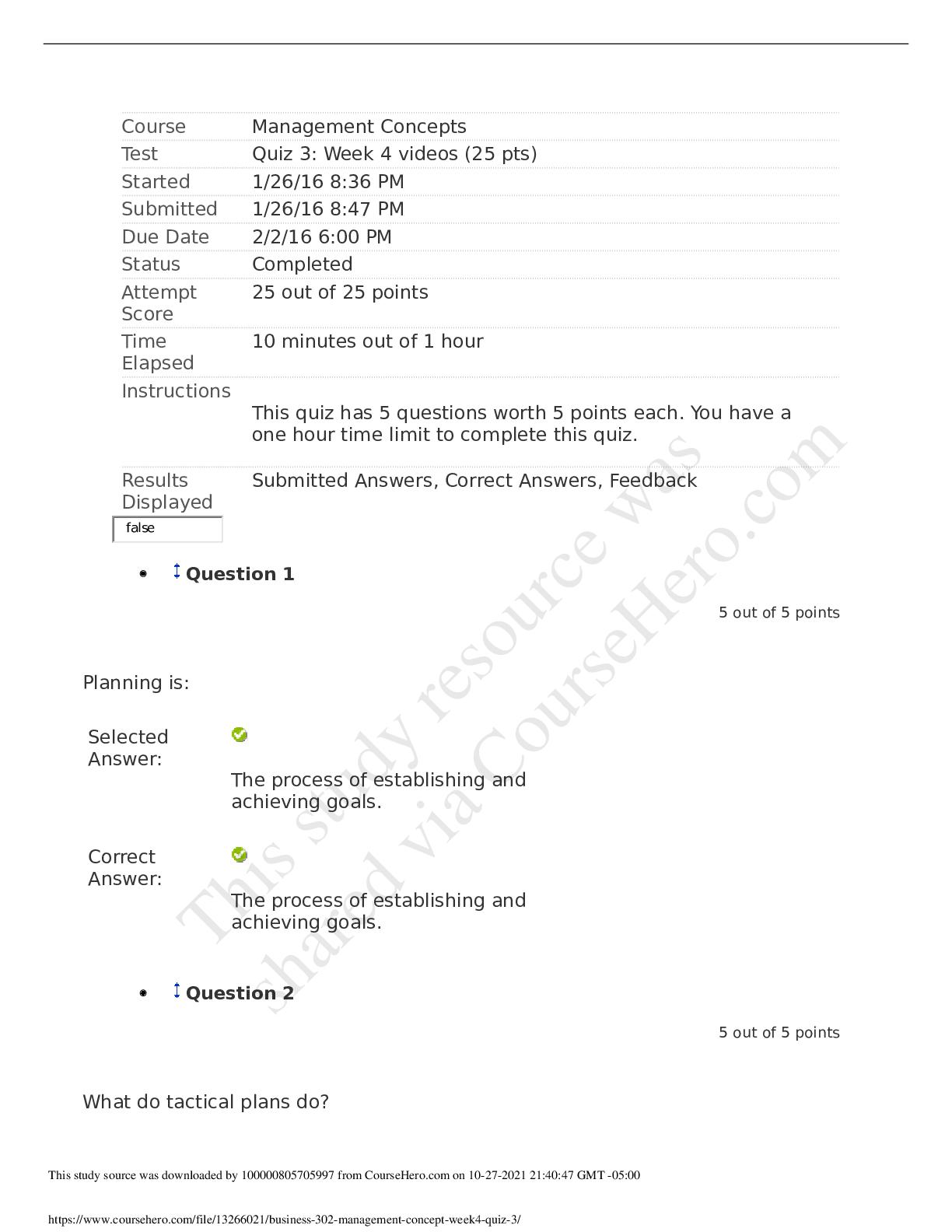
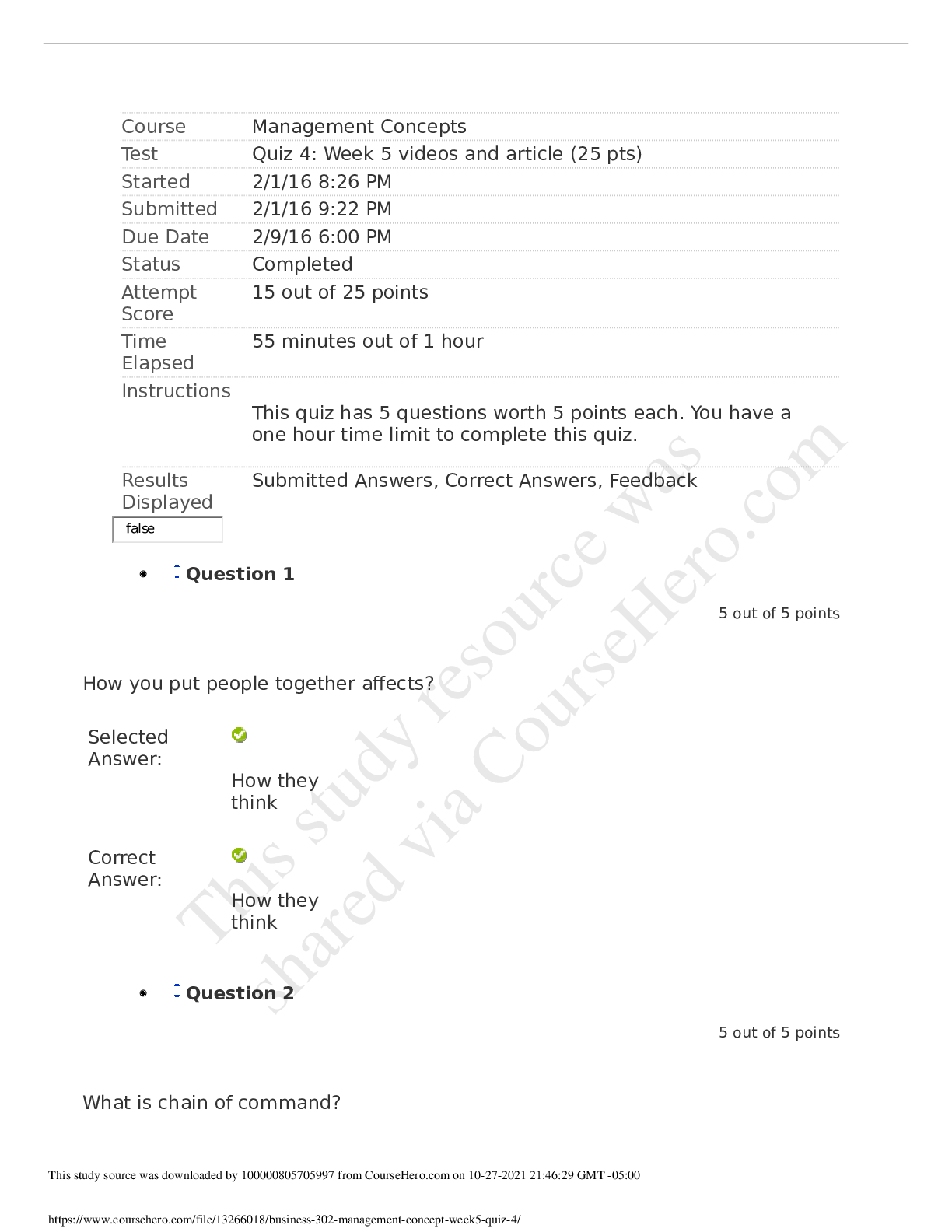

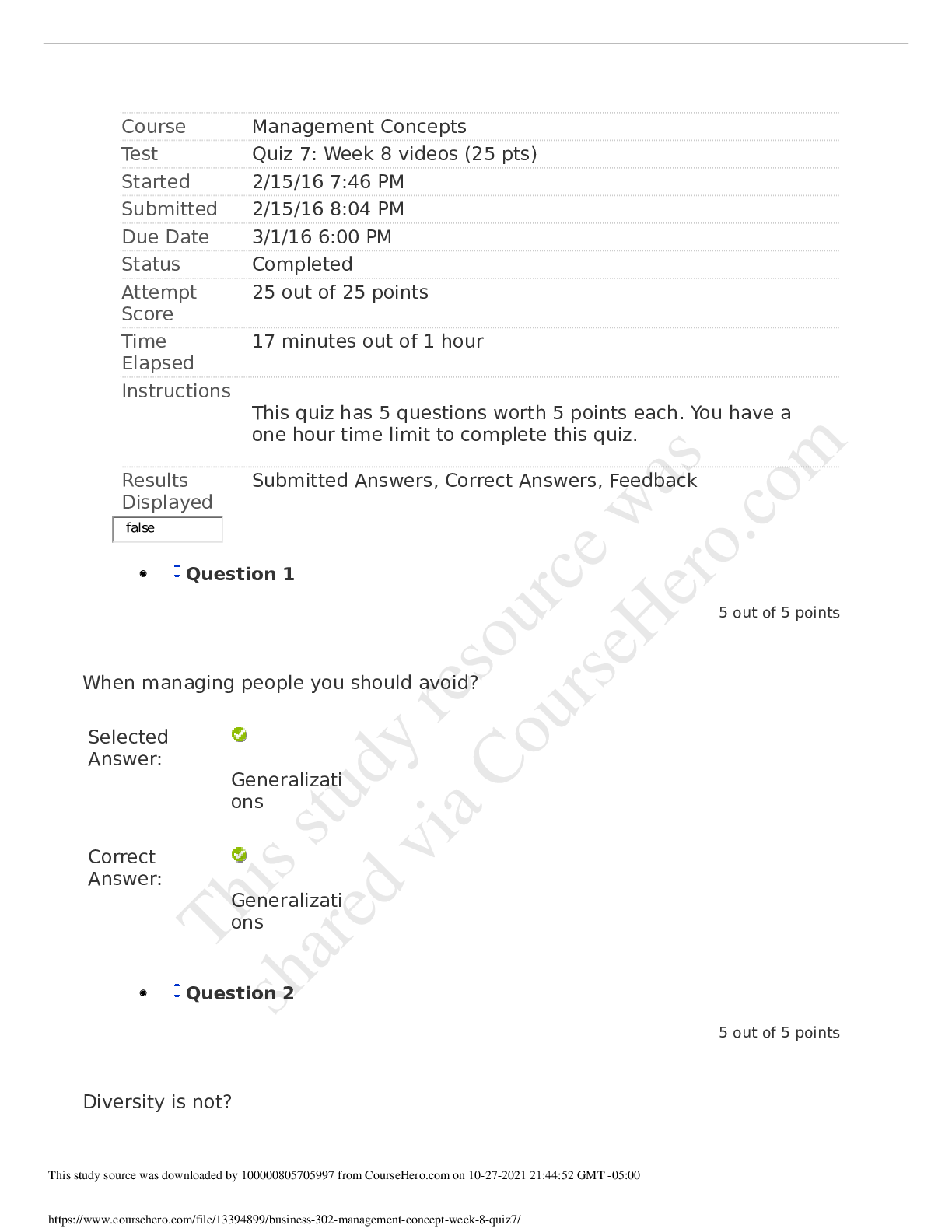

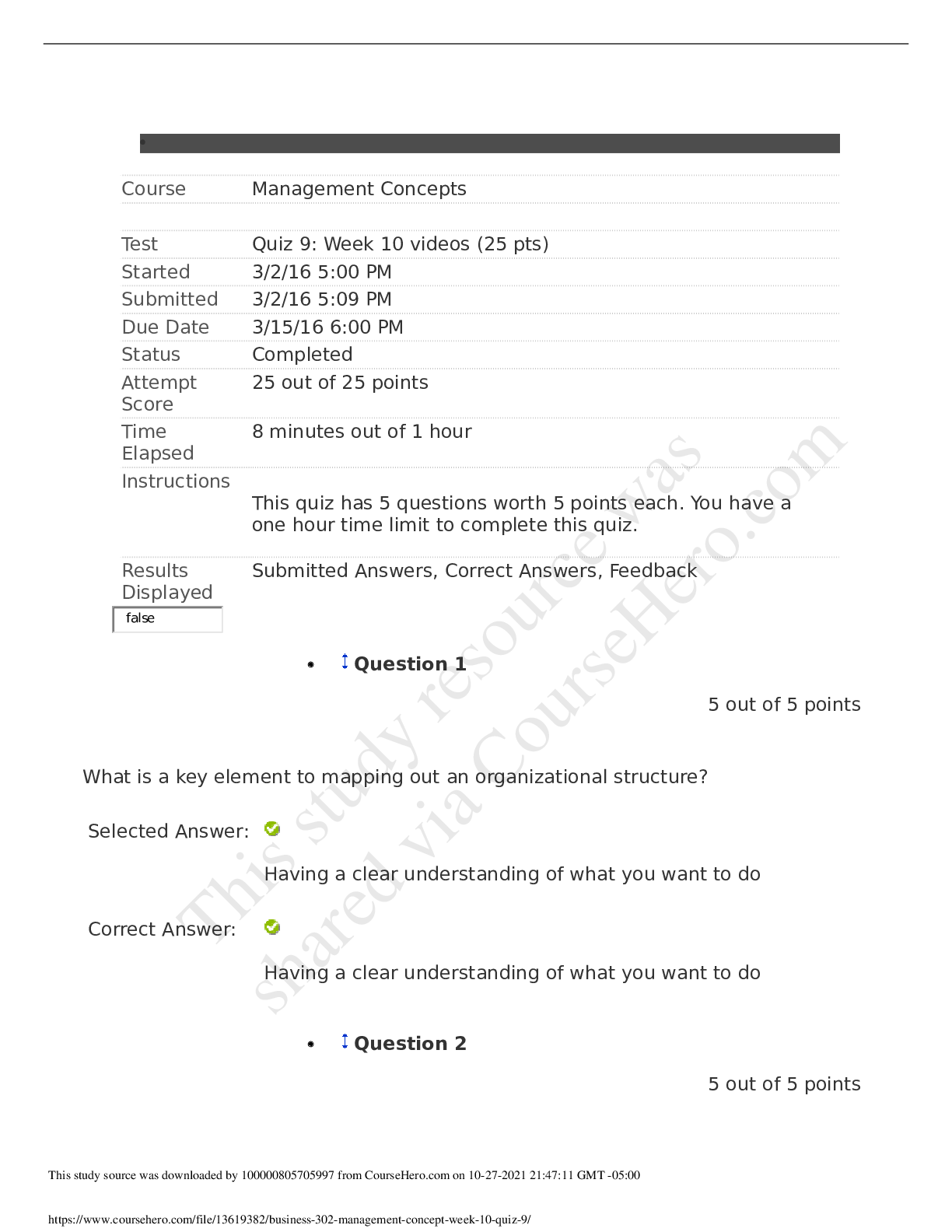


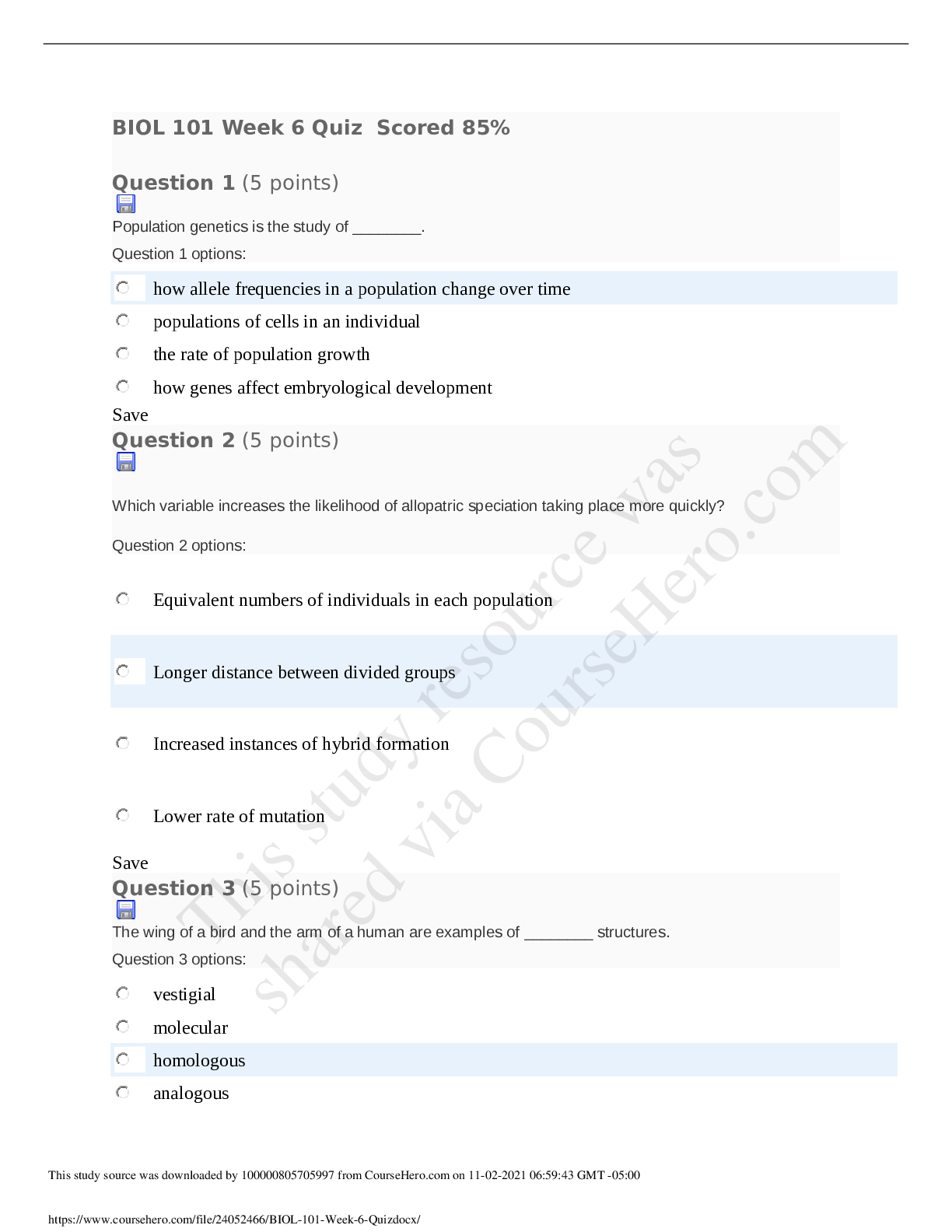

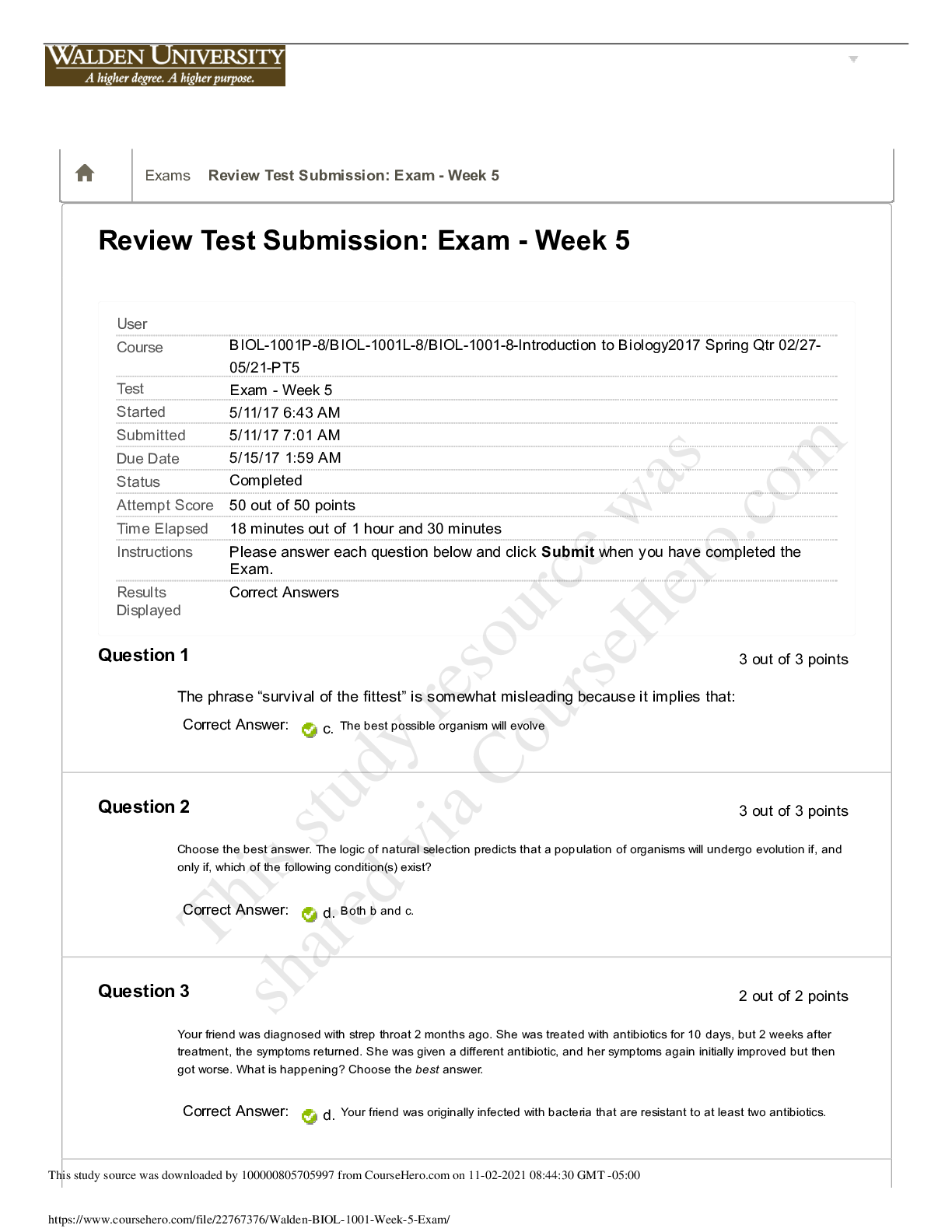

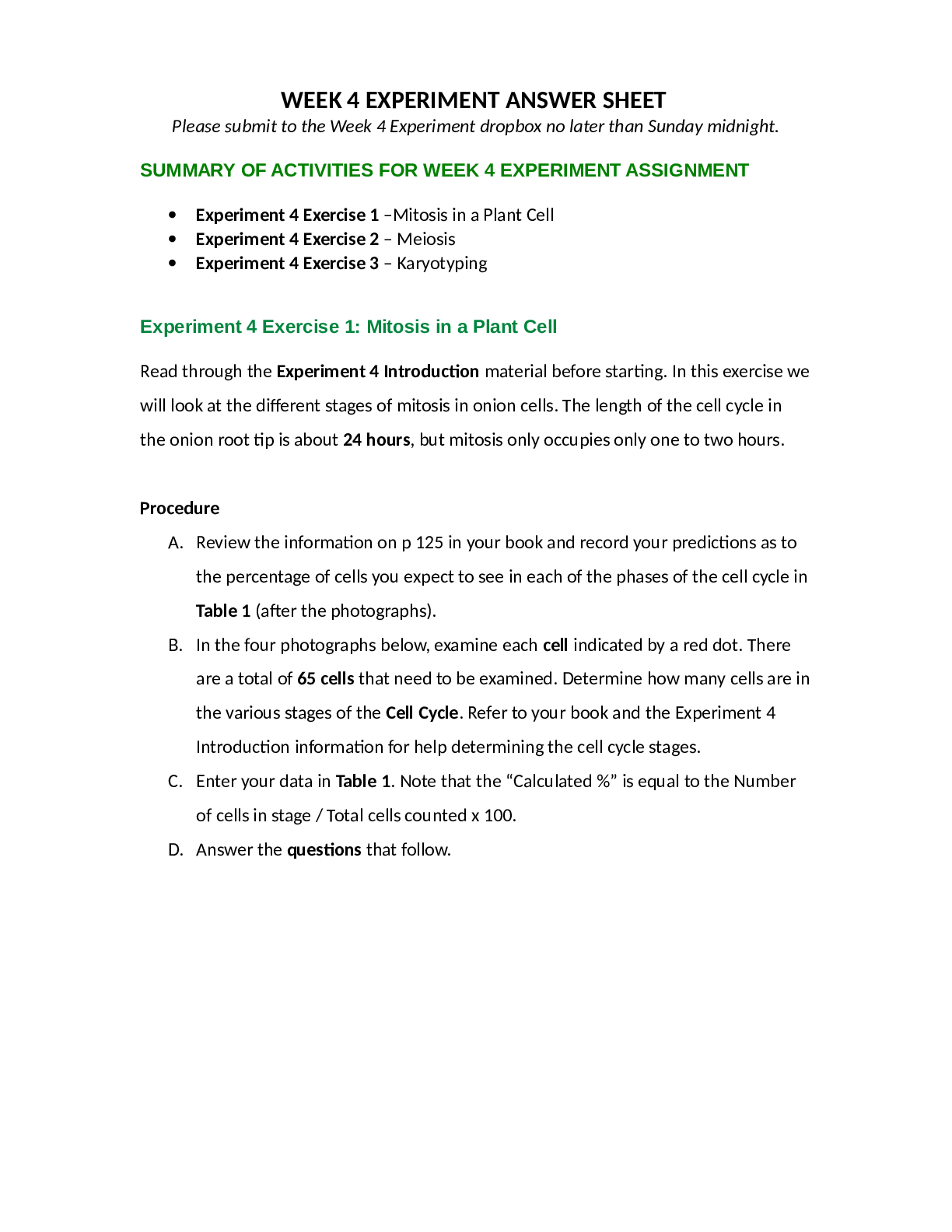


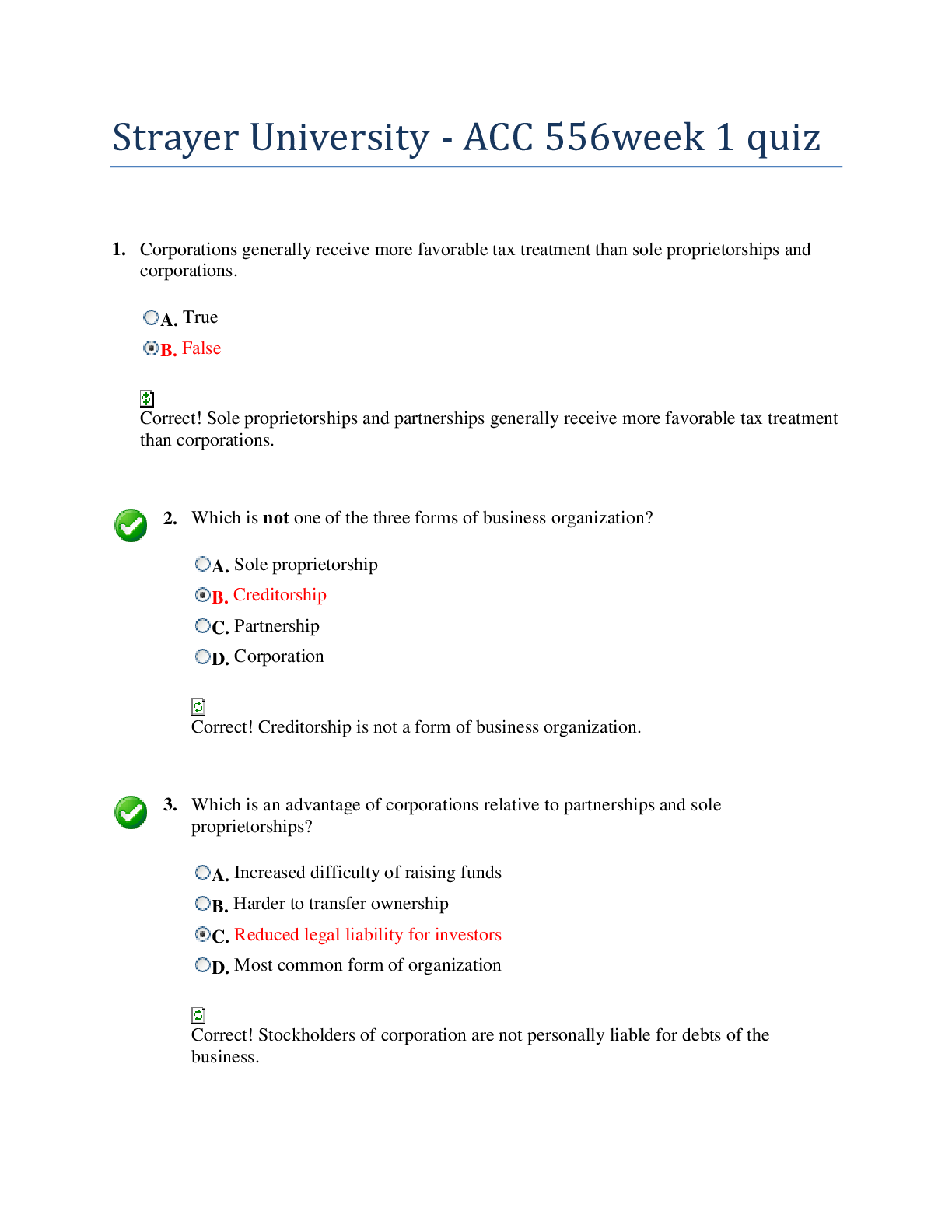

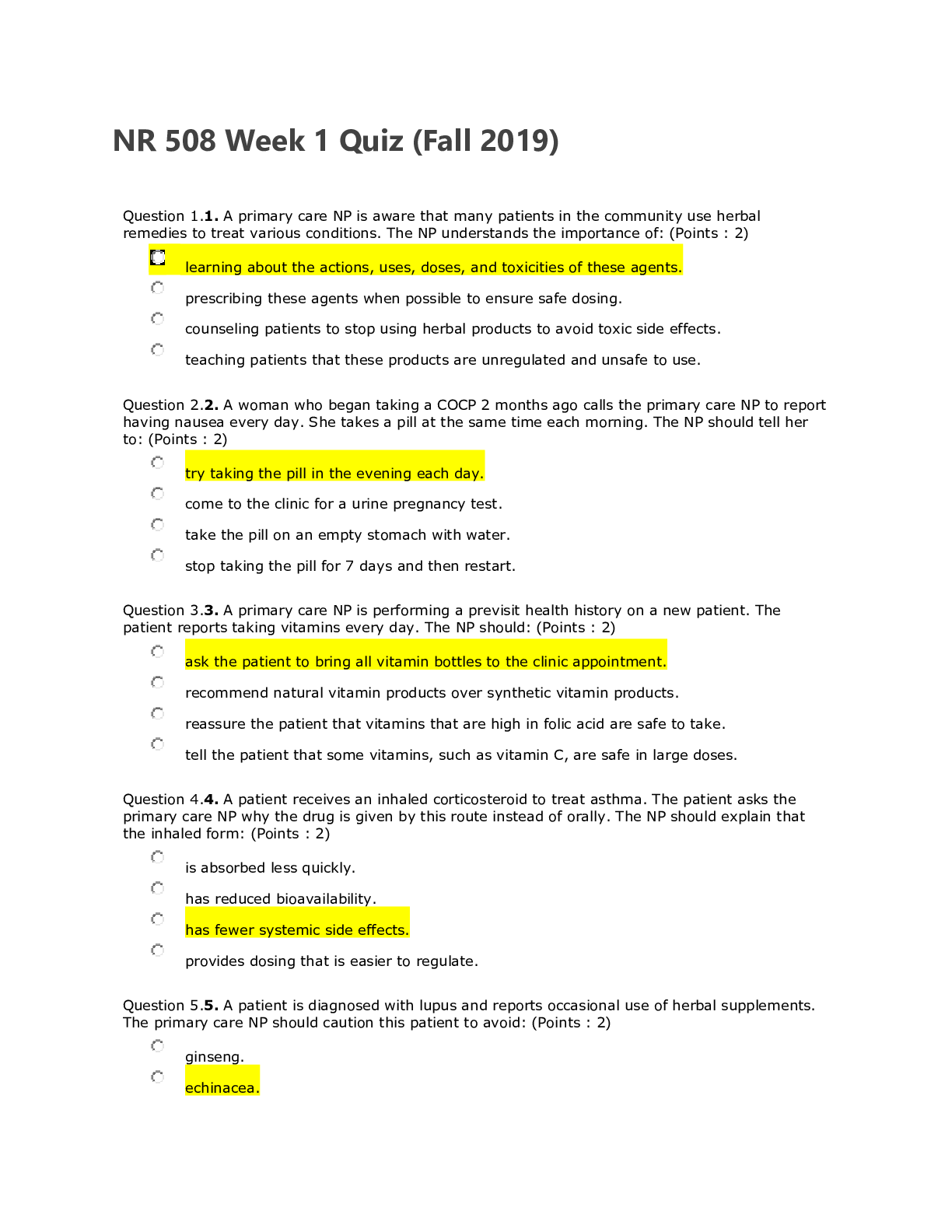

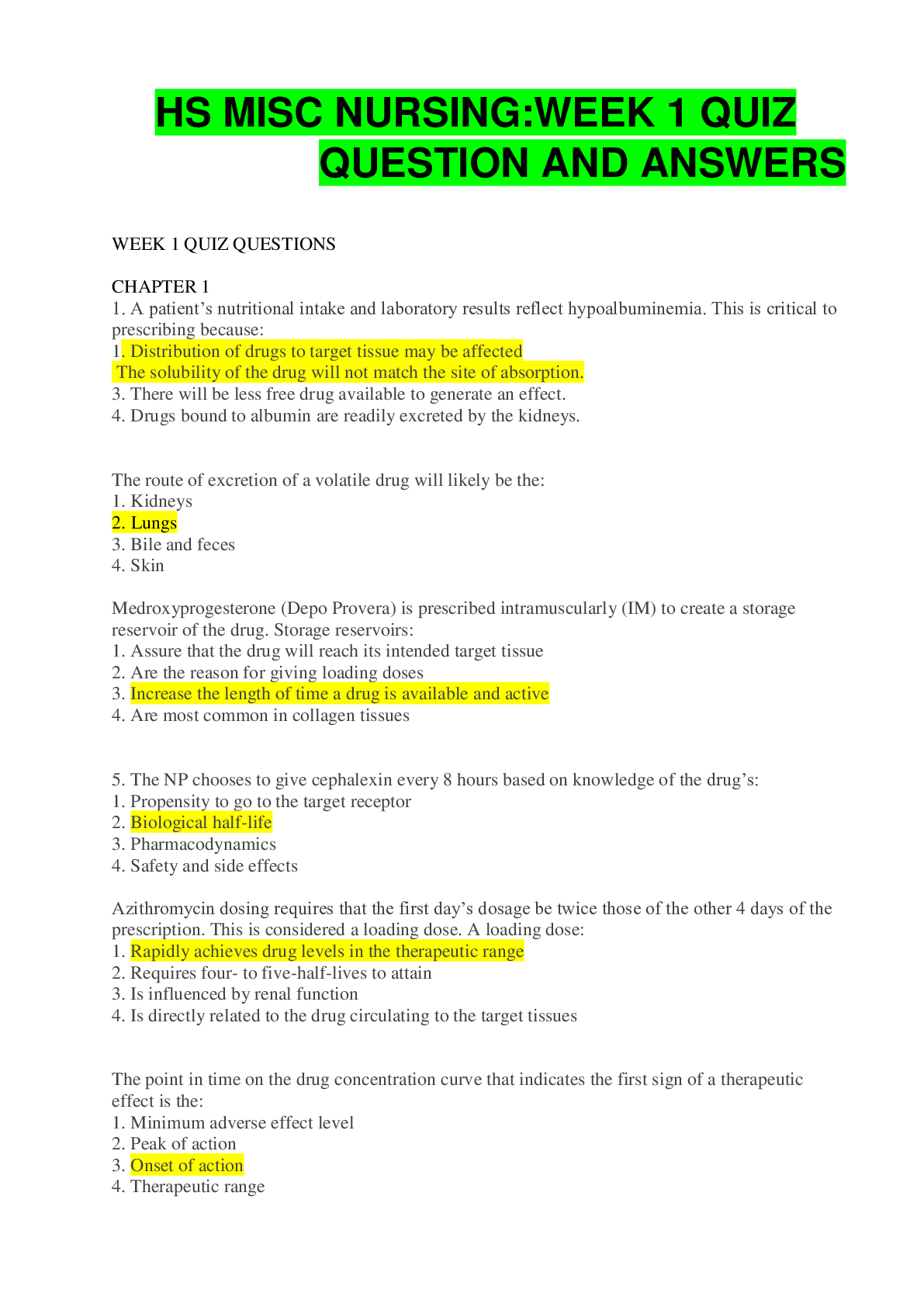

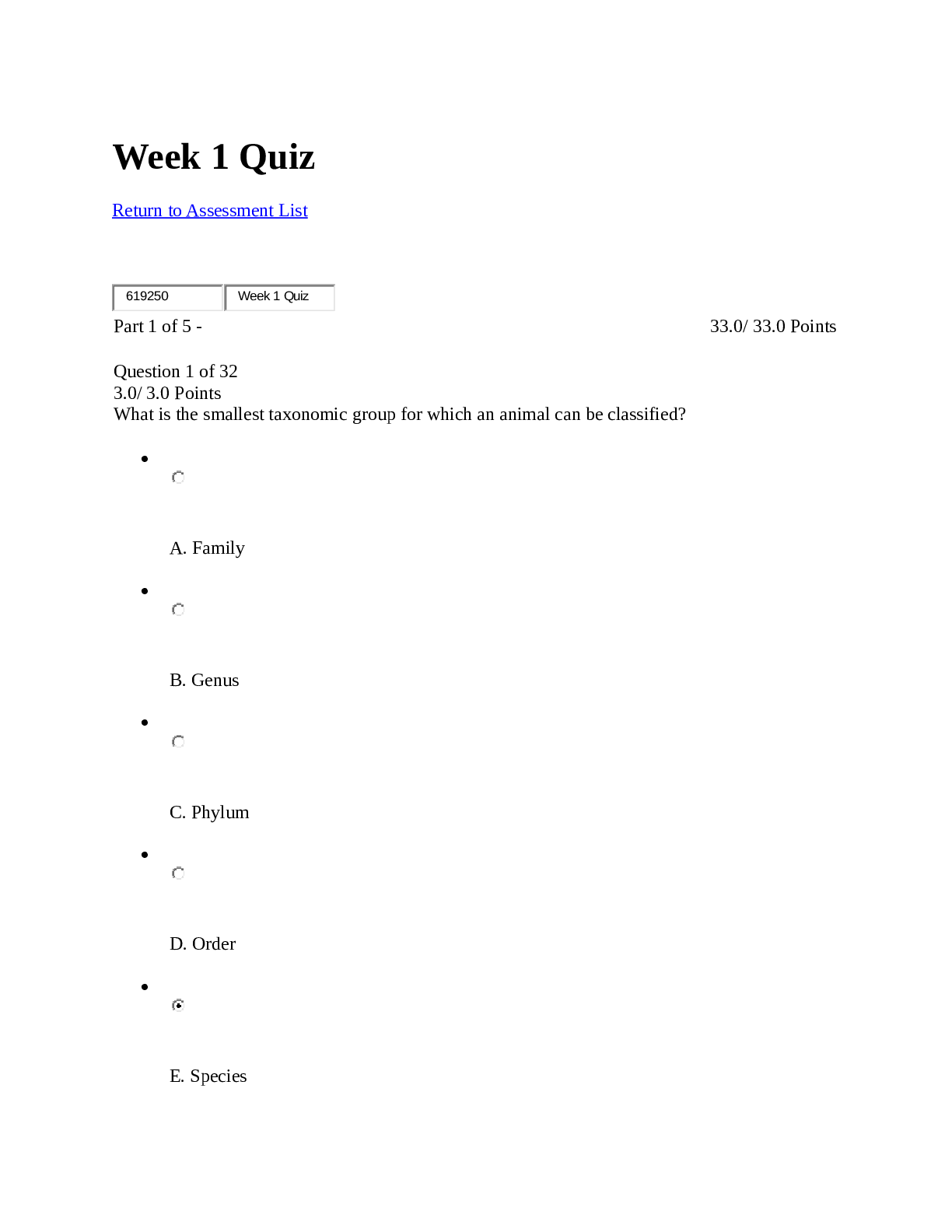

.png)


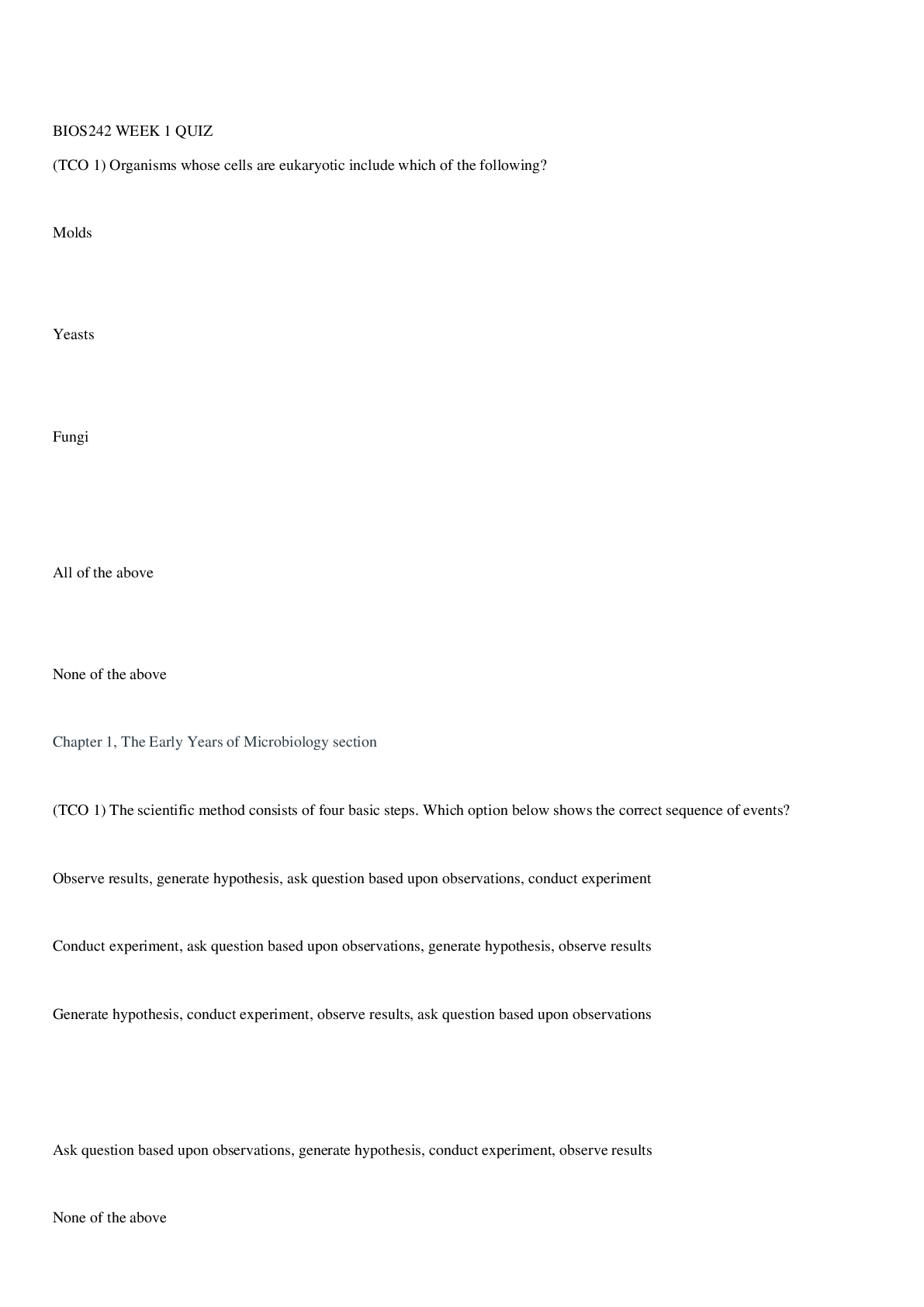

.png)
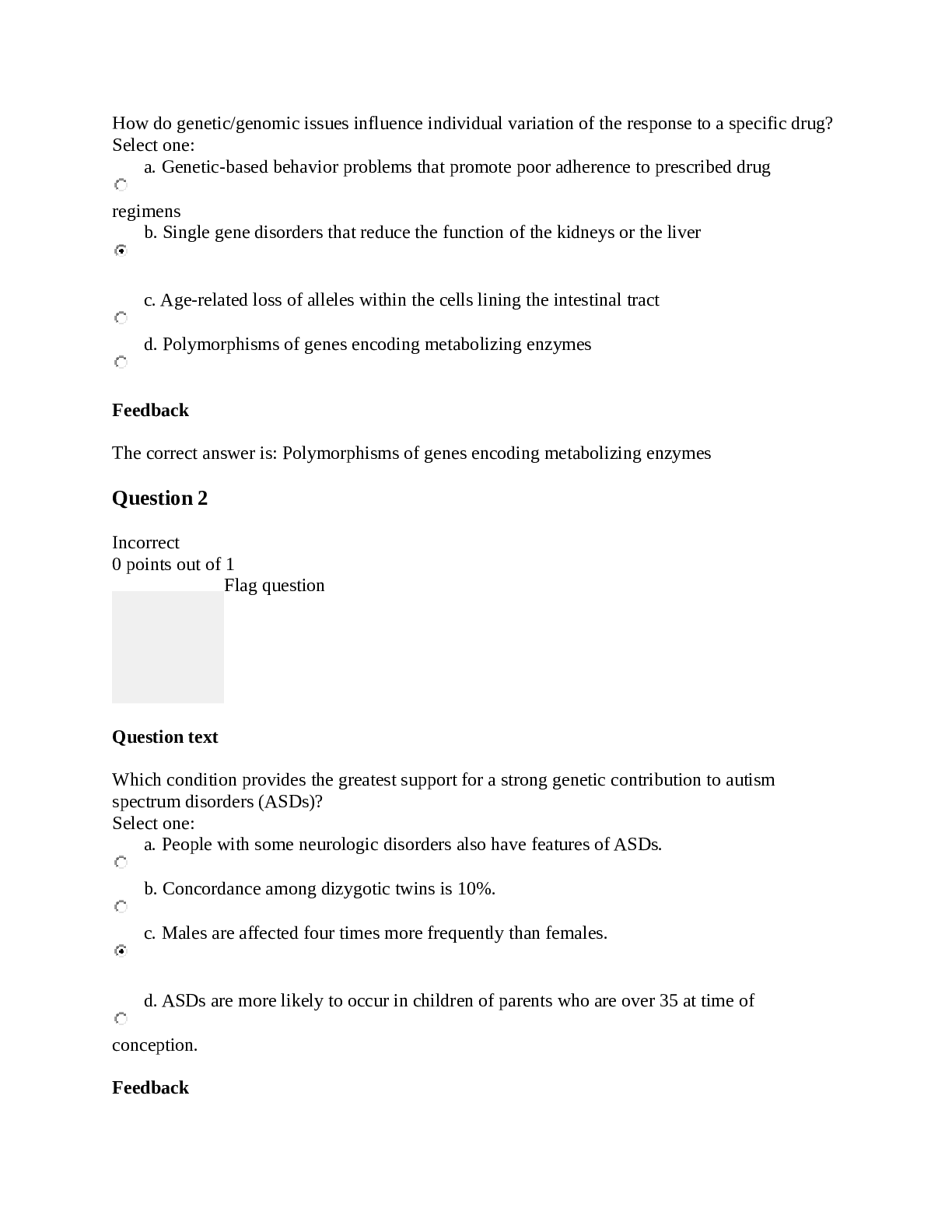
 (1).png)

